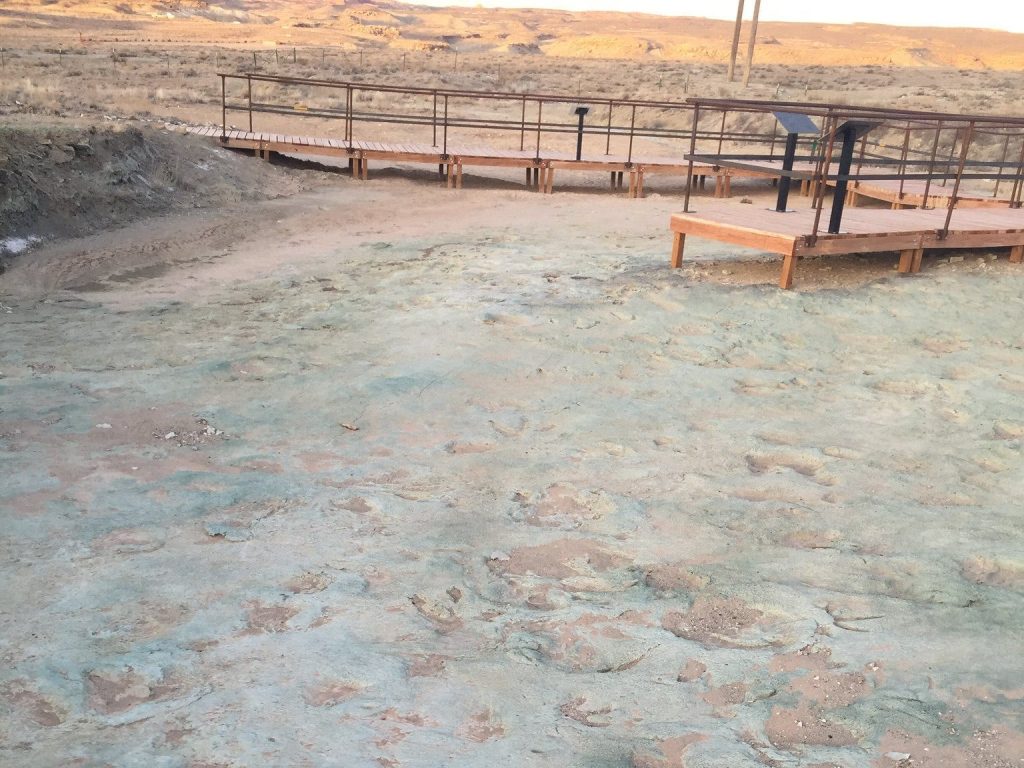- Construction crews damaged several dinosaur footprints at the Mill Canyon Dinosaur Tracksite.
- The Bureau of Land Management concluded that it failed to take necessary precautions prior to construction.
- The historic site contains roughly 200 footprints from at least 10 different dinosaur species.
A section of fragile dinosaur footprints dating back 112 million years was damaged beyond repair by heavy machinery.
The Mill Canyon Dinosaur Tracksite in southeastern Utah offers a snapshot of life in the early Cretaceous period. It contains roughly 200 fossilized footprints from at least 10 different dinosaur species — including sauropods, ankylosaurs, and ornithopods — according to the Bureau of Land Management. Discovered in 2009, it is among the most studied paleontological sites in the world.
But the agency failed to take necessary precautions when constructing a boardwalk aimed at protecting the fragile ancient footprints, according to a Bureau of Land Management report. "Areas of avoidance" were not properly marked and work crews weren't thoroughly briefed on where they could and couldn't go, the agency said in a March 8 assessment, which was made public earlier this month.
"As a result, trace fossils were damaged," Brent Breithaupt, a BLM paleontologist, wrote in the report. "Unfortunately [one] trace was repeatedly driven over, as recent tire tracks indicate that this area was impacted by the backhoe and other vehicles." BLM did not immediately respond to Insider's request for comment.
The assessment concluded that damage to the site was minimal. Even so, "had the project not been stopped, it is likely that much greater damage would have occurred with increased construction activities," the report added.

"I'm absolutely outraged that the BLM has apparently destroyed one of the world's most important paleontological resources," Patrick Donnelly of the Arizona-based Center for Biological Diversity said in a January statement. "This careless disregard for these irreplaceable traces of the past is appalling. It really calls into question the Bureau's competence as a land-management agency."
The report recommended the project be reevaluated and the agency fill a vacancy for a regional paleontologist that has been vacant since 2018. Jim Kirkland, state paleontologist for the Utah Geological Survey, told Science in February. that no paleontologists were involved in any stage of the project. "This was a bureaucratic screw-up," Kirkland said.
"To ensure this does not happen again, we will follow the recommendations in the assessment, seek public input, and work with the paleontology community as we collectively move forward on constructing boardwalks at the interpretive site," the agency said in a statement posted to its website. Before it resumes construction at the site, the bureau says it will draft a supplemental environmental assessment and seek public comment on it for 30 days.
